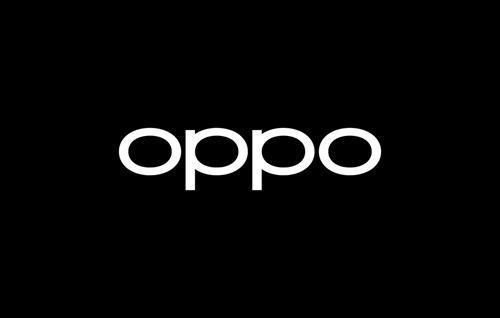Now, the sales universe operates at such velocity that agility and scalability are essential for survival. While sales teams still need to be aligned, compliant, and effective across touchpoints, they also need to be able to pivot quickly with changing buyer behavior, market forces, and product release features. Unfortunately, however, legacy content systems can’t facilitate that kind of speed at all times. That’s where headless CMS comes in. Built for speed, flexibility, and multi-channel accessibility, a headless CMS is the ultimate content engine to fuel sales enablement. It gives marketing, sales, and enablement the opportunity to work in tandem while spinning in place and scaling globally without losing any oversight.
Decoupled Content for Seamless, Speedier Delivery

Coupled CMS systems tie content to where it’s rendered. For sales teams, this means limited options for delivery for time-sensitive sales content across various channels/devices. With the headless CMS, content is decoupled from the frontend; content exists as structured data and is deliverable anywhere web, email, CRM, mobile applications, or sales enablement tools via APIs. Storyblok documentation offers detailed guidance on setting up these multi-channel delivery pipelines effectively. Therefore, the same content gets created once and pushed out in real-time to any device required to execute a campaign, make outreach more personal, or change collateral without automatically imposing a full systems revamp across other teams. Sales teams find it’s easier to access timely, relevant content on the fly; marketing finds easy access to everything in one centralized location.
Modular Sales Content Is Supported and Reusable
Sales enablement relies on the proper content at the right time and sometimes, that means repurposing the same base messaging for other assets. The headless CMS allows content to be built in modules. Assets that apply to sales can be established as product descriptions, case studies, features and benefits lists, testimonials, etc. With the headless CMS, these blocks can be integrated interchangeably for pitch decks, one-sheets, landing pages, and proposals for any nuanced prospect or geographic area while maintaining brand standards. If the pricing table module is updated with a new legal disclaimer, for example, it changes where it lives across all pieces instantly. This allows for quick alignment and accuracy while lessening the burden for marketing and enablement teams who might have to oversee various iterations of the same piece.
Preventing Outdated Materials With Real-Time Content Updates for Global Teams
Nothing is more detrimental to a distributed or global sales organization than outdated content. Whether a rep is using a spec sheet that no longer applies or a proposal with outdated pricing, there’s confusion and a decrease in credibility. A headless CMS eliminates this potential disaster since it enables real-time updates across every channel and every region. Sales enablement platforms, CRMs, mobile devices and even chatbots access the same single source of truth. This means that regardless of whether a salesperson is in New York or Singapore or Berlin, they have access to the same updated information. Furthermore, with localization capabilities, content variations can be sent based on language, location or job title, so global teams can stay in sync without confusing access to different versions of the same content.
Effortless Integration With Sales and Marketing Technology Stacks
Scaling sales enablement requires the content repository to integrate effortlessly with the rest of the sales technology stack. A headless CMS is built to seamlessly integrate with CRMs like Salesforce, sales enablement platforms like Highspot or Seismic and marketing automation solutions like Marketo or HubSpot. Thus, real-time content delivery comes directly within reps’ everyday workflows, accessing sales assets based on deal stage, account size and smarts, and buyer intent signals. For marketing teams, this acknowledges what’s being used how it’s being used and how effective it is so they can adjust when necessary transforming content from mere inventory to strategic enabler.
Personalizing Without Compromising Governance Risks
Personalization is what makes great sales and aligning content with a specific buyer’s needs, pain points and goals resonates. But personalization can get tricky when it comes to brand standards and legal compliance. The headless CMS gives brands the opportunity to personalize while holding governance to standards. Content can be modularized in a way that allows reps to swap out motivating factors value propositions, customer success stories but leave fixed messaging required disclaimers alone. Role-based permissions, hierarchical approval processes and version control tightly hold governance but allow great opportunity for relevance and timeliness. Therefore, reps can be empowered to satisfy their buyers in effective ways while knowing every piece of collateral adheres to quality standards and compliance.
Faster Sales Enablement Content Creation
In a regimented CMS world, creating sales enablement content can slow to a crawl thanks to a CMS backlog of roles content creators need to pass requirements up the chain to developers and designers. A headless CMS eliminates much of that lag. Content editors can create and edit on their own without needing (or asking for) developer intervention since drag-and-drop interfaces and WYSIWYG formatting exist. Simultaneously, developers use their time on the front end to build customizable elements that pull the content via API. This results in easily generated and published new content types, campaigns getting launched that don’t require reskin or redesign requests, and easier A/B testing. Such fluidity within the operation empowers sales enablement teams to pivot to shifting market forces, competitive actions, or even changes to intradepartmental strategic focus without having to rebuild the wheel every time.
Ongoing Iteration and Improvement Based on Data and Input
Sales enablement isn’t only about providing content; it’s also about assessment and evaluation. With a headless CMS integrated with various analytical tools, it’s much easier to see how content is used, disseminated and interacted with. There are dashboards that display what types of assets result in the highest conversions, what’s never been opened, and where reps need training boosts. This enables the content team to adjust and amend previously established content, delete assets that were never successful, and add or adjust time-sensitive amendments. Furthermore, if feedback from sales reps is included from minor content changes via integrated survey tools the content becomes a living, breathing entity that learns and improves over time.
Enabling Growth Without Confusion
As organizations scale and more is required to fuel go-to-market initiatives, content scales significantly, too. More products, more countries, more buyer personas all requiring different value propositions and related assets. A headless CMS is ideally suited to accommodate this scale. Because of a microservices architecture, for example, teams can produce and manage hundreds of pieces of content without losing oversight and management capabilities. Versioning, localization features and metadata tagging empower users to sort easily by product line, industry, region or use case as needed. Whether enabling five AEs or five hundred, everything is still fast, dependable and scalable. Your enablement program scales with you.
Reducing Time to Value for New Sales Hires
One of the greatest pains for any sales enablement program is empowering new sales hires with the information they require to be effective quickly. A headless CMS promotes new hire ramp-up with organized, persona driven content served through easy to digest engines. Onboarding checklists, training decks and playbooks are served dynamically based on region, role or vertical focus so new sales hires get what they need and nothing they don’t right from the start. Furthermore, since content is adjusted in real time, trainers and enablement managers automatically have access to the most current onboarding materials without lifting a finger, decreasing ramp-up time and increasing early effectiveness.
Cross-Functional Support for Sales Enablement
At the end of the day, sales enablement only works when marketing, product, compliance, sales operations are in lockstep and part of an ecosystem. Achieving success does not come from departments in a silo providing static handoffs or waiting for the feedback loop to come back days or weeks later. Enablement comes from transparency, from workflows and visibility that are connected yet flexible enough to allow for independent endeavors while keeping overarching goals in mind.
Enter the headless CMS. A headless CMS is the orchestration tool of all orchestration tools, a repository of content that is modular, cached but allows for different functions to operate within the same system under different workflows, roles and permissions. The product team can submit/edit changes when a new feature is available and ensure they tag the right elements and connect them to sales, compliance and/or marketing-generated collateral. The compliance team can change language, disclaimers, special messaging and legal notifications in real time and ensure product language is appropriate for regions or industries. The marketing team knows what needs additional language for campaign approval, can add campaign story or branding assets and keep the underlying infrastructure.
Because all of this occurs in a transparent environment that gives structure yet collaborative access, everything is coherent, compliant and consistent. Companies do not have to go back and forth to clarify language or figure out who submitted what they know because there is an audit trail. Compliance teams prevent improper language release to the market so sales teams can access it and use it without question or concern; conversely, sales teams who have access to the latest language approvals know what will resonate with audiences because they, too, had access to approve content from marketing’s efforts.
Sales reps will now have better conversations because they’ll understand what changes happened from a product release to compliance-driven changes to campaign objectives; with access to real-time attribution and collateral that demonstrates trusted authority across all customer-facing departments and access points within the buyer journey it makes for a more intelligent way to scale productivity and establish credibility.
Sales Enablement Content for the Next Generation of Avenues and Devices
Buyers engage via new facings, apps, and other devices and interactions. Therefore, sales enablement should allow for any additional support that may be needed down the line for AI chat support, messaging apps, product demos in games, or online AR experiences. A headless CMS aids this process because it serves its content as data via API separating it from its front-end presentation. Thus, whatever avenue buyers utilize down the line digital or otherwise your sales enablement content can be provided up to this new avenue without reauthoring or needing new formatting with outside support. Your sales team can have sales messaging uncovered in a custom video download for their presentation or in a weather app tracker they’re developing for a shop on the corner; with content live in your headless CMS, it can support either scenario.
Conclusion: The Modern Sales Enablement Engine Starts With Headless CMS
Sales enablement is no longer just uploading a PDF to a shared drive or allowing reps access to a deck that will be outdated in an hour. In today’s increasingly digital-first, buyer-driven world, sales enablement means having access to the tools and resources to communicate the right message to the right person at the right time across various channels and touchpoints. Static, siloed solutions cannot possibly keep up on the personalization and scaling fronts required to thrive in today’s selling world.
What today’s companies need are real-time agility, modularity of content and data-driven detail and that’s precisely what a headless CMS offers. Content is decoupled from its presentation and delivered via APIs; a headless CMS provides content blocks that are structured and reusable. This means they can be customized on the fly and extended to wherever needed. Whether a brand needs pitch decks on mobile, a snippet of content in a CRM email, a landing page for a demand generation effort or an onboarding module for a new employee, a headless CMS will ensure everything is accurate and timely for real-world applications.
A headless CMS is more than merely a storage center for information; it becomes the operating system needed for sales enablement. It can integrate with any platform teams already use, from CRMs and sales enablement solutions to marketing automation software, creating cross-functional collaboration without content silos. Marketers can edit messaging in real-time, sales execs can use customizable pitches while remaining within brand-approved boundaries, and leaders have all the analytics and intelligence needed to guide strategy and improve effectiveness.
When buyers expect fast sales cycles and the urgency of satisfaction is through the roof, speed and flexibility reign supreme. Thus, a headless CMS not only elevates the sales enablement experience but it’s a game changer. It turns a company’s sales content architecture into a scalable dynamic and exponentially improved vehicle for engagement and conversion not just as a back-end solution but a front-line defense for any company looking to thrive.

